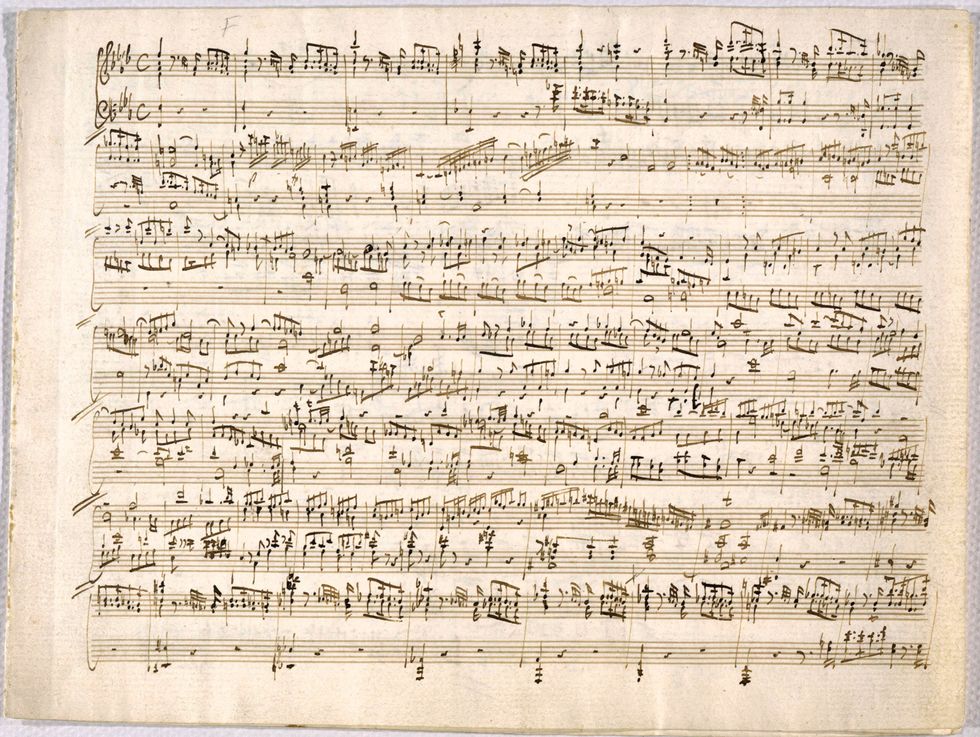Sonata form is a form that was made for solo instruments such as the violin or the piano and it is divided up by the exposition, development, and recapitulation. The exposition of a piece usually involves two themes and the piece starting on the tonic and modulating to either the dominant, relative/parallel minor. The development is free range for the composer to incorporate excerpts of the theme one, theme two, the transitional periods and the closing theme. Lastly the recapitulation is compared to the conclusion of a paper. You would bring back the two original themes and keep it on one key (usually the tonic) and bring the piece full circle.
Sonata forms were applied to symphonies and the first movement of a symphony is normally in a fast tempo and in sonata form. It was also known as Sonata-allegro form because the first movement was normally in a faster tempo.
In Haydn’s Symphony No. 45 in f# minor, the Farewell symphony movement 1 Allegro assai the exposition has different periods throughout it instead of having a straight sentence structure throughout. There are three statements and the first one goes from the tonic to the subdominant, the second goes from the dominant seventh back to the tonic, and the third statement begins to pick up speed giving the tonic, five of four, four, sixth, five, and tonic. I expected to see the first statement modulate from tonic to dominant, but Haydn once again is non-traditional and likes to surprise his audience.
The development restates the opening theme but on the relative major, A major, he then modulates to B minor ending it eventually on a half cadence. Once again Haydn surprises us by stating a contrasting second theme in the development on D Major. He brings us back to the recapitulation after he repeats the contrasting theme a couple more times, and now we see the original theme has been split in half ending the piece.
In Mozart’s Symphony No. 25 in g minor two themes are mentioned in the exposition and the first theme starts in g minor and transitions to B-flat major, the relative major to g minor, and the second theme has a shorter theme than expected taking the themes and sequences them for the transitions. The development is short as well and introduces a new transitional theme. The first theme of the development is brings back the open theme but in A major and a new transitional theme is introduced bringing us into the recapitulation on the tonic g minor. The recapitulation brings the piece full circle restating the theme on the tonic and theme two also in g minor.
Mozart gives us a coda after the closing theme where he plays the opening theme with a new and intense ending staying in the key of g minor. These two composers used sonata form in their own individual ways by staying within the basic format of the style, but using it in a unique way.
















